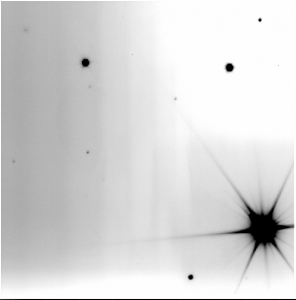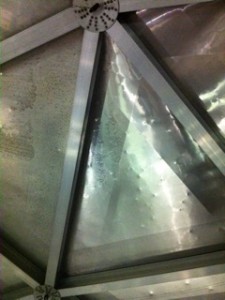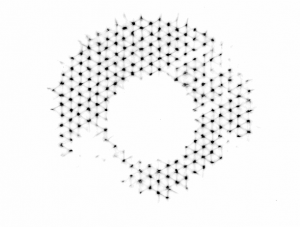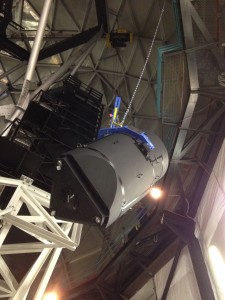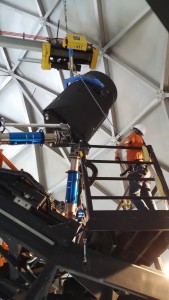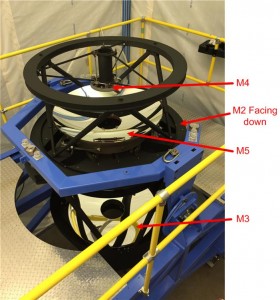This week we had lots of visitors from Austin. We had new equipment to install on the tracker, for example, the field calibration unit. This is the device at the entrance aperture of the corrector which can shine light from flat lamps or from line lamps for calibration of our spectrographs.
We also had delivery of the LRS2-R spectrograph and a temporary installation of a VIRUS unit. The VIRUS unit was put in place mostly to test the mechanics of the enclosure cooling and control systems. We were able to get our first spectrum with both spectrographs. By the end of the week we were able to find a guide star with guide probes at one specific orientation and then hold a science target on a specific location of the LRS2-R and VIRUS IFUs. We then could move the target around the IFU to confirm the direction within the IFU. Even the weather cooperated finally, with some near photometric conditions we put a spectrophotometric standard on the LRS2-R. On the VIRUS unit we confirmed that the dither mechanism does work and we were able to move a target from one fiber to the adjacent fiber.
We will be moving back to guide probe commissioning in the coming week and may not get back to LRS2 instrument commissioning until January.
All in all a very exhausting, but good week!!!

